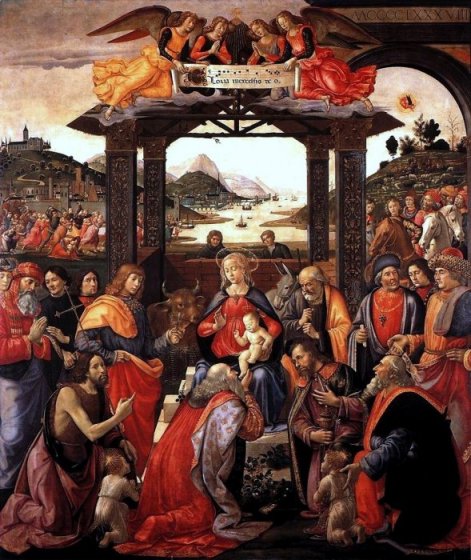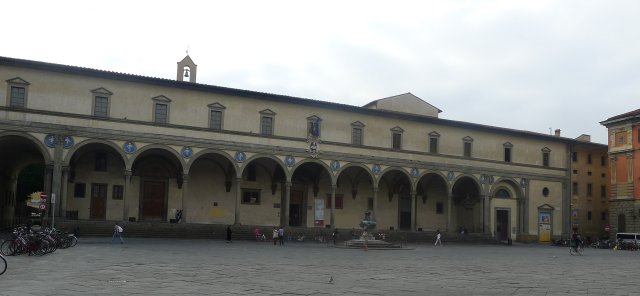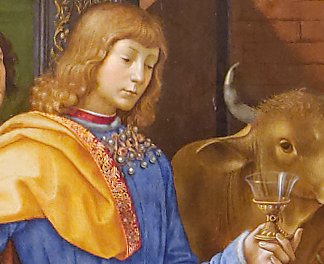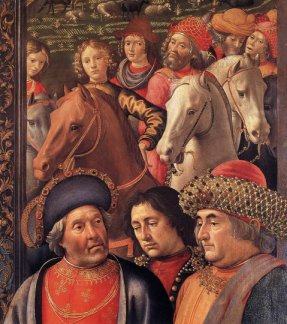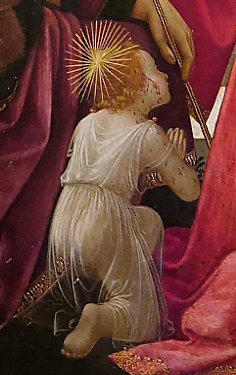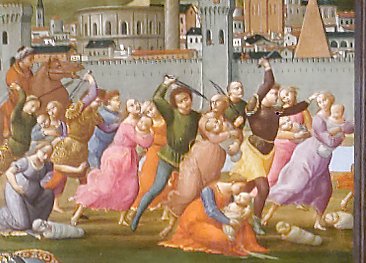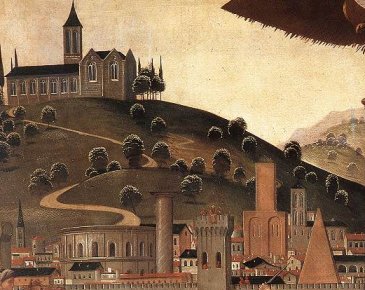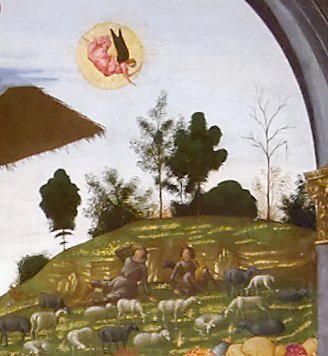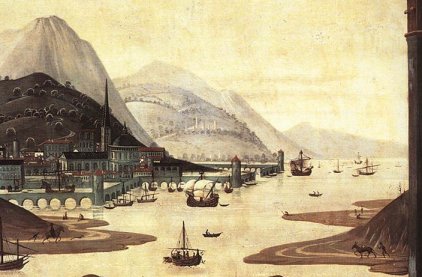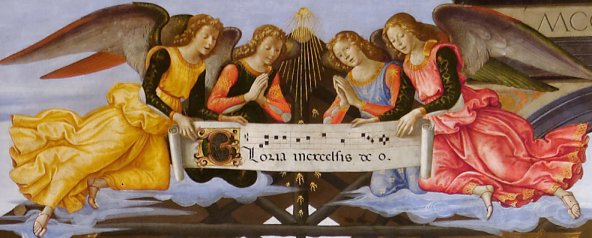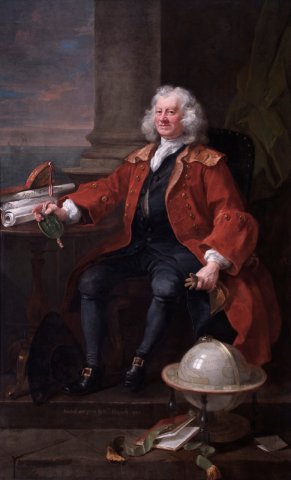|
|
|
|
|
|
|
|
|
|
|
|
|
The Ospedale was a long time in building. Commissioned by the Guild of Silk Workers, construction started in 1419 to designs by Brunelleschi, but wasn't completed until 1445. It was a foundling hospital or orphanage, with the same function as the Foundling hospital in London, or the Ospedale della Pieta in Venice. In all three institutions, babies could be 'posted' through a revolving doorway; sometimes a token was attached so the child could be reclaimed at a later date. Who's who The Magi In such a crowded picture it is not entirely easy to work out who is who. The Magi, old, middle-aged, and young as is traditional, are fairly easy to spot. The oldest Magi kisses the Christ-child's foot; the other two are carrying their gifts. The youngest holds a gold and glass goblet; in appearance, he can be confused with John the Evangelist, but note: no halo. |
|
|
|
|
|
Saints Haloes are a give-away where saints are concerned. John the Baptist is on the right, pointing towards the Christ-child. The saint on the left is an elderly version of John the Evangelist. The clue for this is in the predella, by Bartolomeo di Giovanni |
|
|
Artist, commissioner and donors. Ghirlandaio gives us a sideways glance from the left of the picture. The ecclesiastical gent to his left is generally identified as Francesco di Giovanni Tesori, who commissioned the picture. The well-dressed (and rather well-fed) men in their splendid hats on the right, playing the part of the Magi's entourage, are almost certainly members of the Silk Workers Guild, here advertising their own wares. But that figure in the middle: another image of the artist? Surely not. |
|
|
|
|
|
Children and builders The two characters in the middle of the picture seem to be just idly looking over a wall at the scene. One is a monk or cleric, the other a layman, the two groups responsible for the hospital. But the wall is unfinished; surely these two are building it. As they build the stable for the Christ-child, so the silk workers built a hospital for orphaned infants. Look closely at the two children at the front of the picture, and you can see that they both carry injuries. These figures are two of the Innocents killed by Herod, potent symbols for the Hospital of the innocents. Note the unusual halos; radiating rays rather than circles. In early Italian art such haloes were used to indicate those who had been beatified, but not yet canonised. |
|
|
|
|
|
The Background As is fitting, at the top right is the scene of the Massacre of the Innocents. Above that is a stylised image of Rome: it includes Trajan's column, the Pyramid of Cestius, the Coliseum, and the Torre delle Milizie. Note the Gothic church up on the hill; paganism was on the way out. On the left the shepherds are alarmed at the Annunciation of the dive-bombing angel. The beautiful central image shows a harbour scene and a wide river or estuary. Could this refer to the crossing of the Red Sea on the flight into Egypt? |
|
|
|
|
|
|
j |
|
Angels The singing angels at the top are singing the Gloria: Gloria in excelsis Deo. My musical friend has confirmed the accuracy of the notation. It reminds us of the original location of the painting on the high altar of the chapel. |
|
|
|
|
|
Finally. . . another painting celebrating the founder of a hospital for orphaned or unwanted children. Utterly different, stylistically and culturally: a secular portrait of a man surrounded by the symbols that represent him. And yet the impulse that drove the silk workers was the same that drove Coram. |
|
|
|
|
